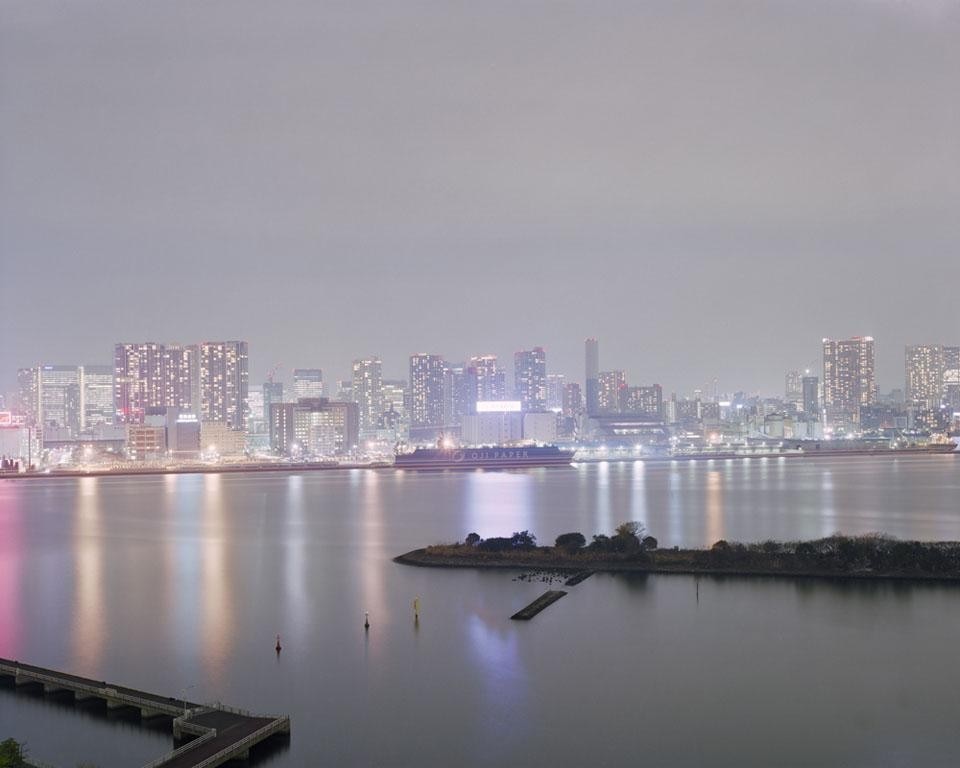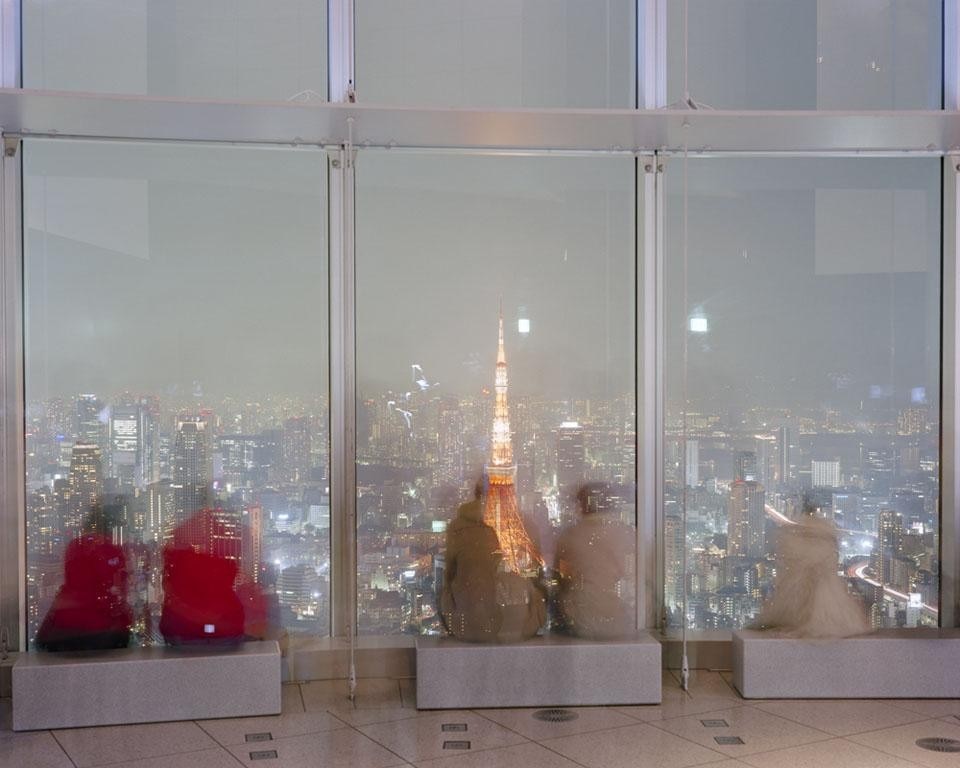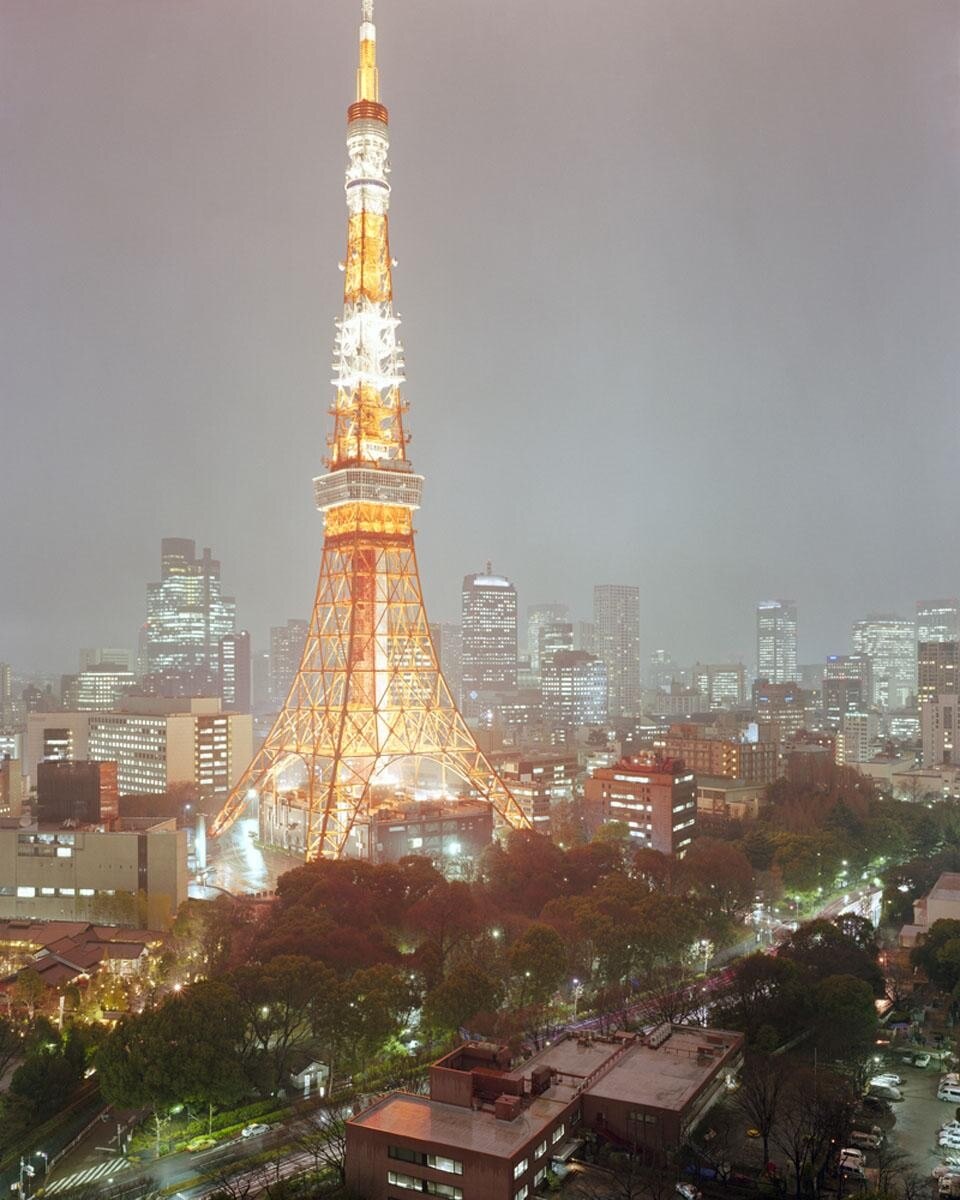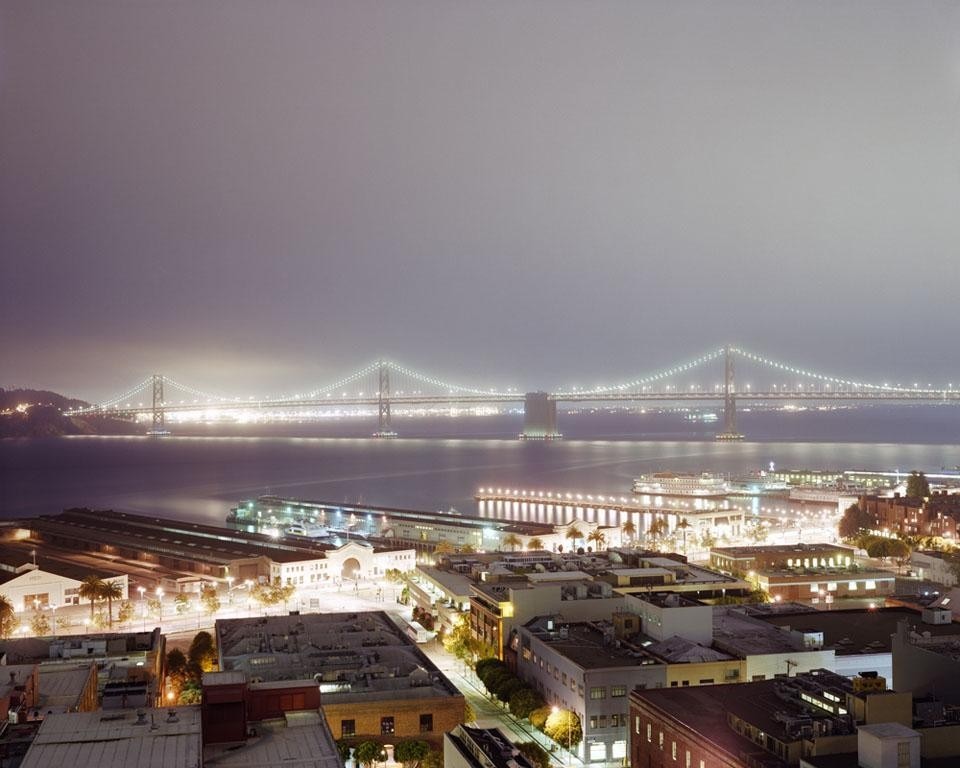Your various bodies of work, the earlier projects featuring vaults and domes, and now these cityscapes and night, are all architecturally based. How do you think your work fits within—and diverges from—the conventions of architectural photography?
The previous work featuring sacred ceilings was very specialized. If you look through art and architectural history, there are photos of domes and vaults, but the difference is I've taken a much more methodical, conceptual approach. I built up a typology of the subject, a methodical and conceptually determined catalog of a certain type of structure. My interest in these subjects comes out of a much broader interest of the sublime, in fact a metasublime or technological sublime, recreated in architectural terms. I think the Light Cities project its not that dissimilar. I'm interested in the skyscraper as an emblem of modern architecture, a new monument. I see them as equivalent to those earlier works of sacred architecture. But I had never really worked out pictorially how to deal with them—I suppose the cities have crept in through my earlier interests in the human-altered landscape.
These new monuments also include natural landscapes that have human incursions in them such as pipelines and dams. The ways that people are altering the face of the earth is an underlying factor in my interest in the technological sublime.
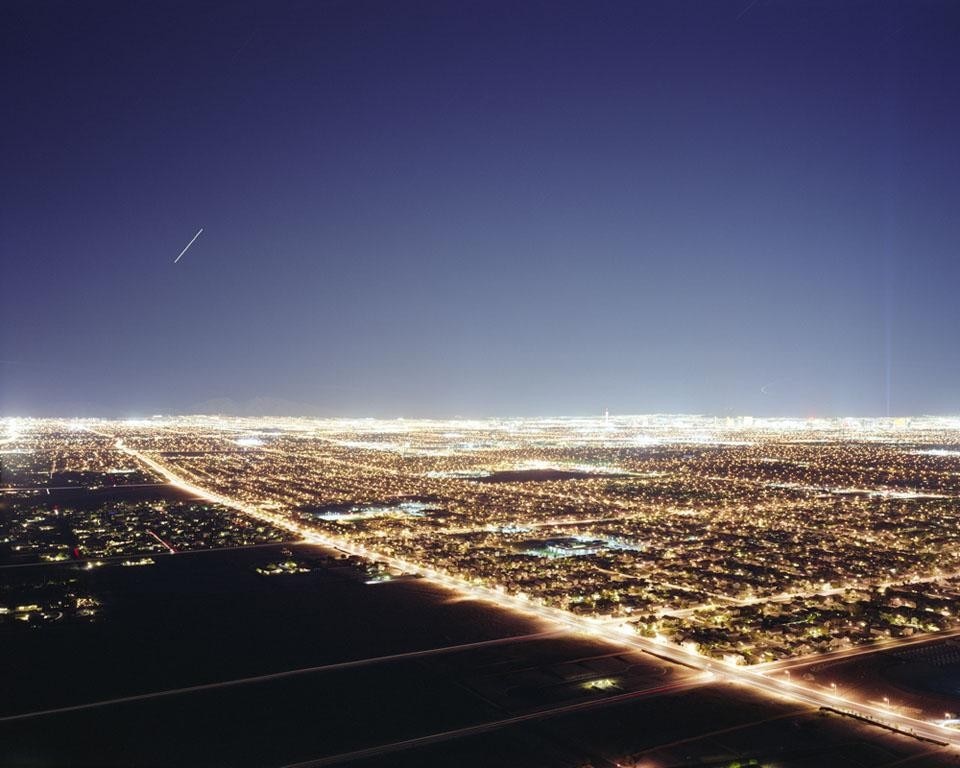
There is a latent sense of terror in the sublime. In the context of my work you may wonder about the sustainability of our way of life. Somehow the light factor in these photographs conveys both the aspirations of humans, but also suggest total environmental collapse by the way we drain energy from some sites and pump them to other sites.
The older meaning of sublime is not so dissimilar to "awesome"—but that is almost meaningless today. Historically, the sublime was a different experience than beauty. For Edmund Burke, Immanuel Kant and Joseph Addison, it always had an element of fearfulness about it. It conveyed something terrifying, but there was some pleasure in that terror. It doesn't describe just the experience itself, there's a certain meditation on the aesthetic experience. Addison said it's the imaginative repositioning of the self within a field of vast space. In some ways maybe the description of the sublime goes hand-in-hand with early the modern sciences of geology and astronomy, which revealed that the world was much vaster and older than previously thought, upsetting the Christian framework. There must be some relationship between this notion of the sublime and the development of the sciences.
There's something really intimidating about human existence within these vast time structures, but there is also something pleasurable about that contemplation. Here technology comes into it, as soon as England and Europe become industrialized, people realize there is a kind of loss of the natural world. They didn't see it in totally positive terms—there was always a negative, apocalyptic edge to it. In current times we are very aware of that aspect, where we fear an overindustrialized future without a natural world. In the nineteenth century it was the railroad or steam power that conveyed that human efforts have a sublime aspect to them.
In Leo Marx's influential The Machine in the Garden, he tries to reconcile the technology of the railroad with the appreciation of this older pastoral idea. He quotes American transcendentalist thinkers like Thoreau who are trying to reconcile new experiences such as hearing the shrill scream of a rail whistle piercing the serenity of the town of Walden. Art historian Barbara Novak also reveals this double-edged axe by discussing the tree stump as an emblem in nineteenth-century art. It reveals the potential of human aspiration, but also the underlying darkness.
So when it comes to my work, I wanted to explore sublimity with images that are literally treating light, but where you also understand the suggestion of the darkness. I think that's how my pictures diverge from most night photography as well. This work is very high-key tonally—the images are almost obliterated by the light. That's a reaction in some ways to my previous projects—such as the Star Drawings or Dusk to Dawn series, where I would go out to the Australian desert where there's no light pollution at all—the sky at night is primordial, totally incredible. Then coming to New York or European cities is a shock—even going to rural areas like the Berkshires or the Grand Canyon—and seeing that the level of light pollution even there is quite high. This light from cities we're pumping out really changes our experience of the night sky.
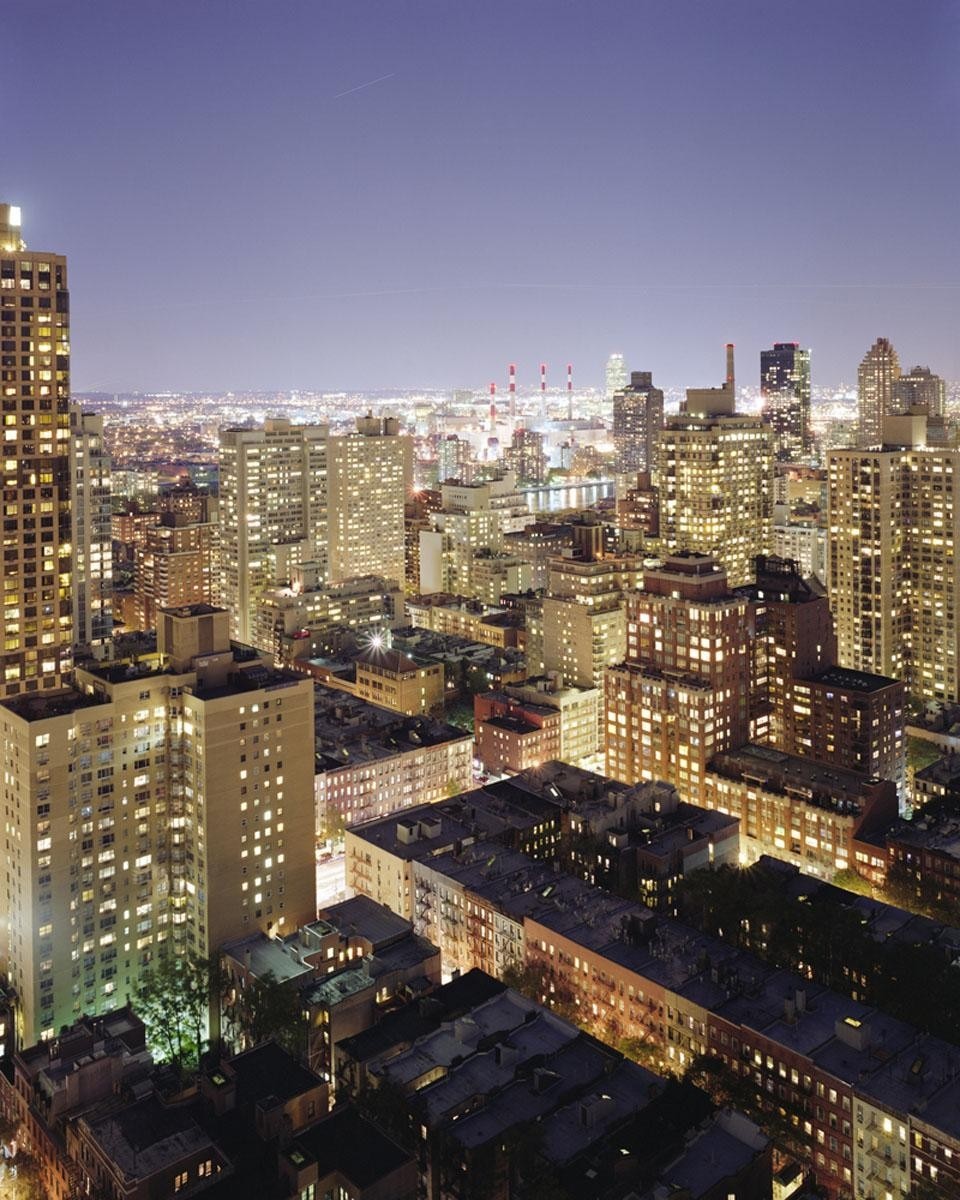
The elevated view that I'm interested in is hard to get access to, but I am trying to apply a rigid conceptual framework to my approach to urban visualization. I'm surveying cities worldwide, which raises issues of globalization. In many ways the modern city is becoming quite uniform. I'm trying to look at this phenomenon worldwide so that one can compare these urban instances within a broader phenomenon.
I suppose the other thing is the transcendental experience of light itself, which was a big part of the vaults and domes work—light has this symbolic weight. Optical light as a spiritual light. That takes on a dimension with the cities themselves, but with another dimension on a cognitive level.
How many cities have you photographed so far, and where are you going next?
I've mainly photographed in the major Australian cities, Sydney and Melbourne being fairly big, 4–5 million each. Also major American cities: L.A., Chicago, New York, Boston, San Francisco, Denver, Seattle. The next push for me is really Asia. I went to Japan last year and took Tokyo and Osaka, which was totally amazing, and I am going to China next. Part of it is the futuristic skylines of places like Shanghai and Dubai—but it's also about the scale of those cities. Ultimately I want to make a series of the 20 largest cities in the world, and I'm looking for funding. So including global sites from Mexico City, Rio, now two in China and three in India—in a way I am trying to think of it like the dome project. It is not as formally disciplined as the vault and dome projects, which their natures are very symmetrical. In those projects I was always having to shoot right under the apex of dome or crossing of the vault to avoid any perspectival distortion.
The modern city has some of the geometric regularity but it's nowhere as uniform. Still, I am assembling a typology of cities within this work. The new monuments of the skyscraper intersect and divide space of the city in different ways. Western American cities don't have much in the way of vertical urban centers, their physicality is about their sprawl. So I'm getting up on outlying peaks and showing how cities are completely filling valleys. This way of the city expressed not in urban density but in completely filling in the land—this is also where we see powerful traces of sublimity.
Historically, the sublime was a different experience than beauty... It always had an element of fearfulness about it. It conveyed something terrifying, but there was some pleasure in that terror.
